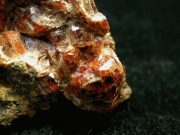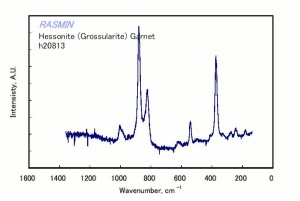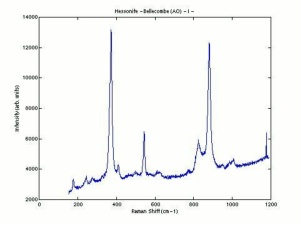Hessonite
Jump to navigation
Jump to search
Description
A golden brown to red color Gemstone composed of calcium aluminum silicate with a small portion of Iron. Hessonite resembles yellow Zircon in color and both were called hyacinth in ancient times because they were found in the same gem-bearing gravels of Ceylon. Hessonite is softer than Quartz and less brittle than zircon and hence, was used in ancient engraved gems (Ogden 1982).
Synonyms and Related Terms
grossularite; cinnamon stone; essonite; mormoriom; hessenite; esonita (Esp.); Hessonit (Deut.)
Physical and Chemical Properties
- Cubic crystal system with dodecahedron and trapezohedron habits
- Luster = greasy to vitreous
- Fracture = conchoidal or uneven
- Cleavage = indistinct
- Streak = brown
- Fluorescence = inert to weak orange
- Pleochroism = none
- Dispersion = 0.028
| Mohs Hardness | 6.5 - 7.0 |
|---|---|
| Density | 3.64-3.69 g/ml |
| Refractive Index | 1.70 |
| Birefringence | none |
Comparisons
Properties of Common Gemstones
Resources and Citations
- Jack Odgen, Jewellery of the Ancient World, Rizzoli International Publications Inc., New York City, 1982
- Random House, Webster's Encyclopedic Unabridged Dictionary of the English Language, Grammercy Book, New York, 1997
- The American Heritage Dictionary or Encarta, via Microsoft Bookshelf 98, Microsoft Corp., 1998
- Wikipedia: Hessonite (Accessed Sept. 7, 2005 and Dec 2022)


